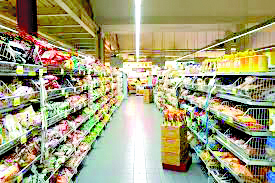Traders embrace supplier credit to keep off lenders

More Kenyan businesses are now opting for credit arrangements with their suppliers to stay afloat as risk-averse banks hike borrowing costs, locking traders out of credit.
Coming on the back of economic difficulties, this is a deviation from the traditional method where businesses entered a trade finance agreement with lenders, or simply took loans to finance operations on their own.
This new development reflects a shift towards exploring alternative means to avoid the high interest rates charged by banks.
According to Stanbic Bank Africa Trade Barometer (SB ATB), 58 per cent of the total 263 respondents agree to have entered a credit term arrangement with suppliers within eight months leading to May 2023, an increase compared to 44 per cent recorded previously in September 2022.
Small businesses
Small businesses made up 71 percent of the total respondents, followed by large businesses (17%) and corporates (13%). The biggest jump was recorded among small businesses, with 57 percent of them leaning to supplier arrangement from the previous 43 percent.
66 per cent of big businesses have equally embraced supplier-credit terms, an increase from 53 percent realised in September 2022. For corporates, 55 percent have adopted the trend, also a rise from 39 percent.
“While corporations historically had a high uptake of credit arrangements with their suppliers—especially pre-COVID-19—small businesses are now also pivoting toward this source of credit,” reads the SB ATB survey.
SB ATB survey, which sought trade environment perception among businesses across 10 African countries, ranked Kenya at position six overall in terms of markets, beating Tanzania, Uganda, Zambia, and Angola. South Africa, Namibia, and Mozambique were the top three in tradability score.
The ranking was based on seven broad thematic categories, including trade openness, access to finance, macroeconomic stability, infrastructure, foreign trade, governance and economy, and trade financial behaviour.
The switch to supplier-credit terms is a reflection of the challenges in accessing finance through conventional channels in the medium term, primarily driven by the persistent increases in the Central Bank Rate (CBR).
Latest data from the CBK show strong credit growth in transport and communication (24.9 per cent), manufacturing (19.6 percent), and consumer durables (12.7 percent), while trade is behind at 9.4 percent.
“This has a direct negative implication on the cost of borrowing (at least in the medium term) and the working capital needs of traders and producers. This could result in limited investment in trade and commerce activities by individuals and enterprises,” says Stanbic Bank.
Core inflation
In the last monetary policy decision released early this month, the Central Bank of Kenya (CBK) retained a seven-year high CBR of 10.5 percent for the second time in a row despite core inflation falling within the government’s preferred range of between 2.5 and 7.5 percent.
“Increases in NPLs (Non-Performing Loans) were noted in the manufacturing, mining and quarrying, real estate, and building and construction sectors. Banks have continued to make adequate provisions for the NPLs,” CBK stated in the last monetary policy.
Sector players say the ability of businesses to service loans has been weighed down by diminishing demand from consumers as Kenyans contend with a high cost of living.












